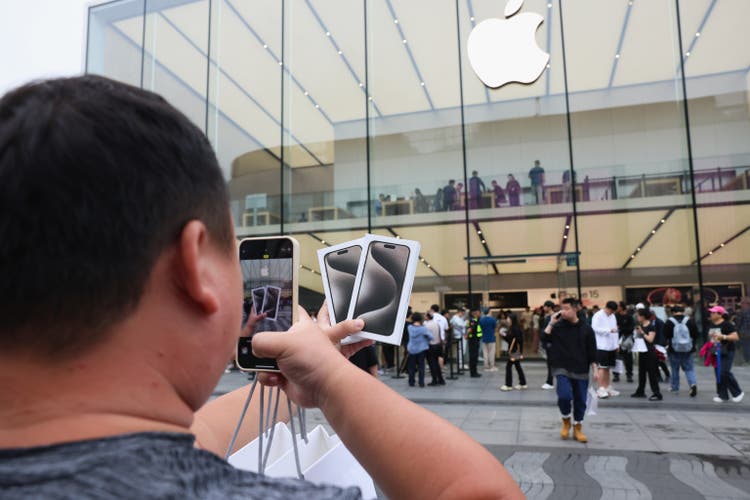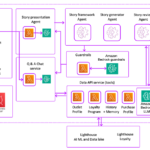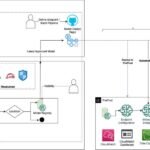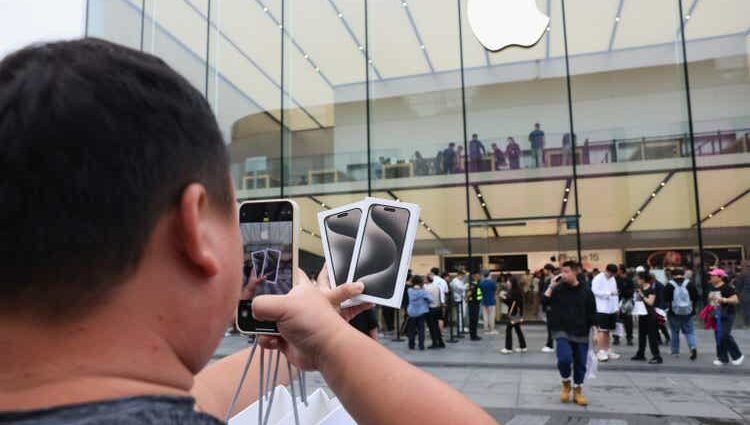
Lintao Zhang/Getty Images News
Apple (NASDAQ:AAPL) had instructed its managers to reduce the number of workers on the iPhone final assembly lines by up to 50% over the next few years, The Information reported, citing two former Apple employees.
In November 2022, police officers at a factory in Zhengzhou, China had confrontations with workers protesting over strict COVID-19 lockdowns and pay disputes. Disruptions at the factory — operated by Foxconn Technology (OTCPK:FXCOF) — caused shortages of iPhone, leading to a sales decline for the phone that holiday season, the report added.
Following the incident, Apple’s Sabih Khan, senior vice president of operations, instructed managers to reduce the number of workers on iPhone final assembly lines by as much as 50% over the next few years.
To achieve this, the U.S. tech giant started approving automation projects for its assembly lines, which had previously halted due to high up-front costs, the report noted.
The move led to a significant amount of automation handling the final assembly for iPhone 15, the report added, citing three people involved in its manufacturing.
If Apple is able to more fully automate iPhone manufacturing, it would be able to move more of its production operations from China to countries such as Vietnam and India, where experienced manufacturing engineers are difficult to get, the report noted citing former Apple manufacturing managers.
In April, it was reported that Apple doubled its production of iPhones in India, assembling about $14B worth of phones last fiscal year, a sign that the company is accelerating its push to diversify beyond China. The company now makes nearly 14% or about 1 in 7 of its iPhones in India. Foxconn — which is formally known as Hon Hai Precision (OTCPK:HNHAF) (OTCPK:HNHPF) — assembled about 67% of the India-made iPhones in the fiscal year ended March 2024.
Reducing its reliance on China has become vital for Apple due to labor disruptions and growing trade tensions between the U.S. and China, and Taiwan.
Apple already seems to have started reducing the number of workers who work on manufacturing its devices in China. Earlier this year, Apple noted in an annual report on its supply chain that the total number of employees it monitors at its production partners for work-hour compliance declined to more than 1.4M in 2023 from a peak of over 1.6M in 2022.
It was the first time these numbers declined in a year-on-year basis in over a decade of the company publishing the reports. The number of employees fell despite the number of factories Apple monitors rose to more than 380 from over 300 a year earlier.
Apple has started buying machine-learning startups to help it replace people who inspect products on its assembly lines. Earlier this year, it acquired Canada-based DarwinAI, which uses computer vision to inspect parts such as printed circuit boards for defects.
The startup also made small machine learning models which can run on iPhones. If iPhones could test themselves, Apple would not require buying testing tools at a large scale, the report noted.
Apple has also bought Palo Alto, Calif.–based Drishti, which helps it analyze video footage of its assembly lines to identify bottlenecks and manufacturing problems in real time, the report stated.
Over the years, iPhones have become difficult to assemble as they become more sophisticated. High turnover at the facilities assembling the phone in China meant Apple and its partners had to break down the assembly of the smartphone into simpler tasks to make it easier for inexperienced staff to complete them.
However, this also meant that the total number of people at the iPhone facilities continued to increase as the company added more stations on assembly lines to get the simpler tasks done, as per the report.
In internal meetings at Apple, a topic of discussion was the dislike Apple CEO Tim Cook and COO Jeff Williams have for fully automated assembly lines, due to their experience at IBM in the 1990s, where they worked previously.
Apple found it was difficult to justify the cost of machines which may only be used for a single year before the iPhone design refreshes, which would lead to the machines becoming obsolete.











